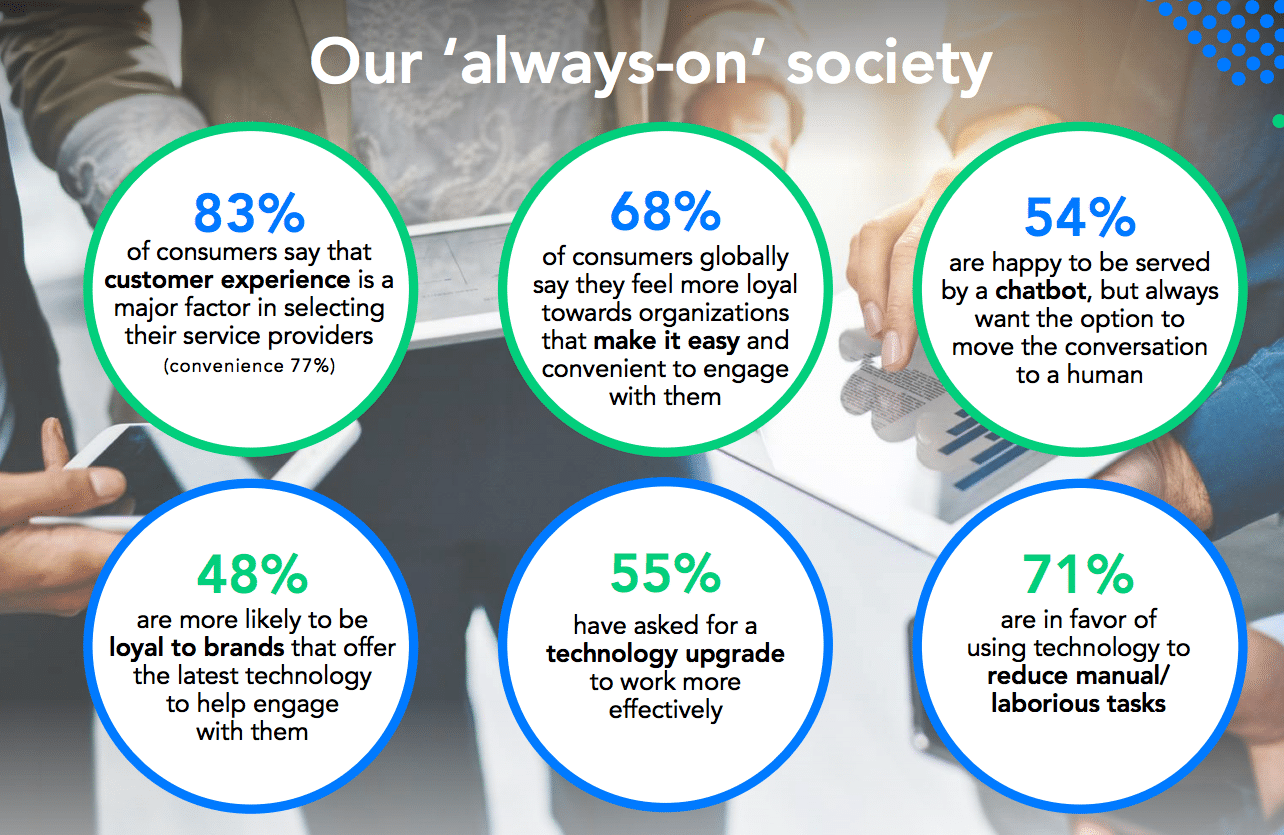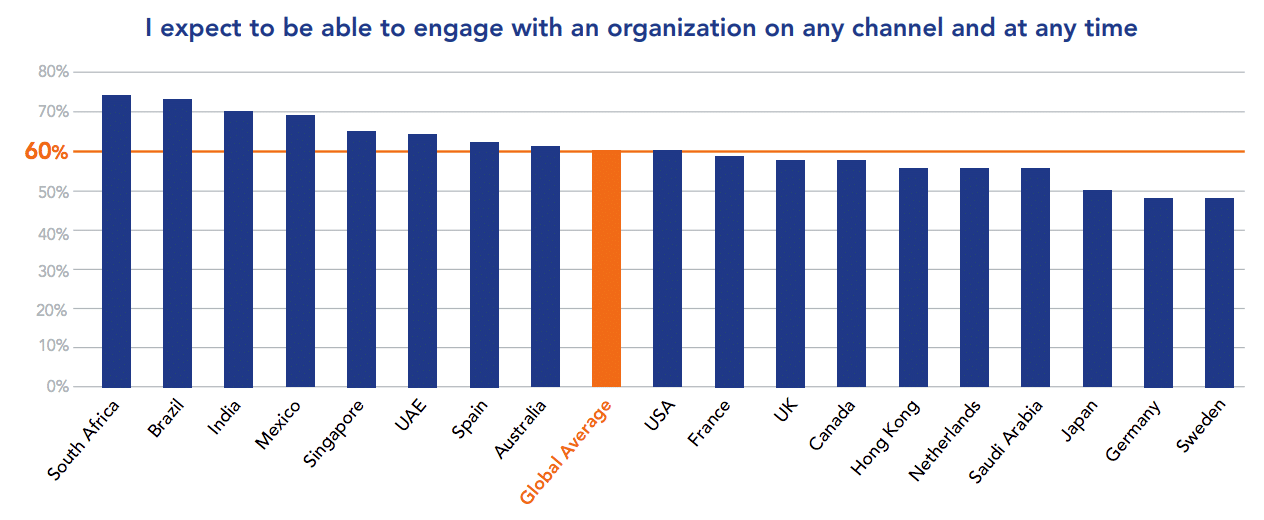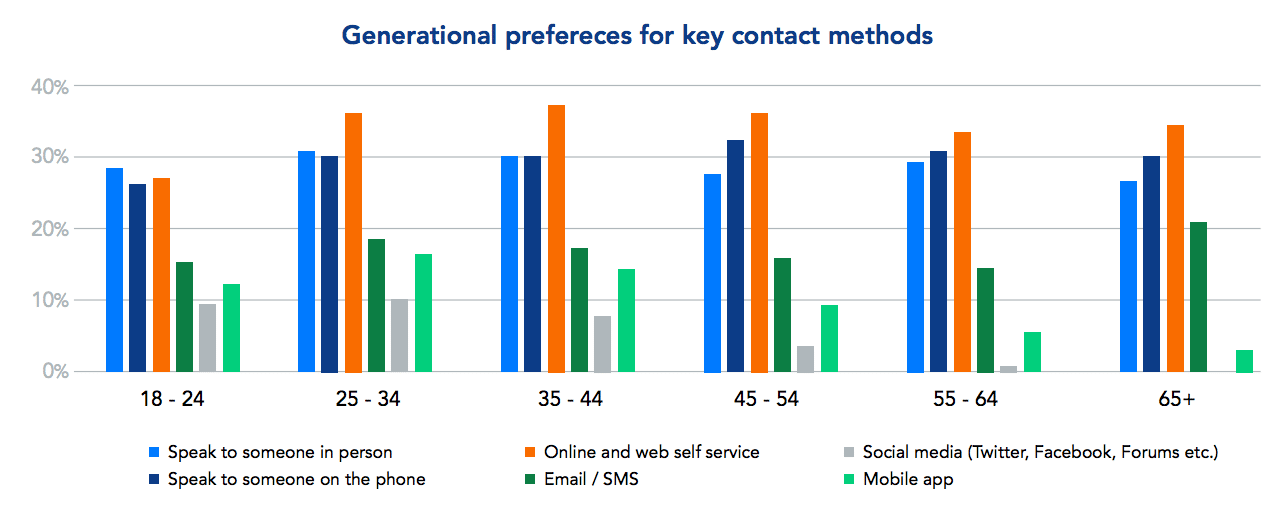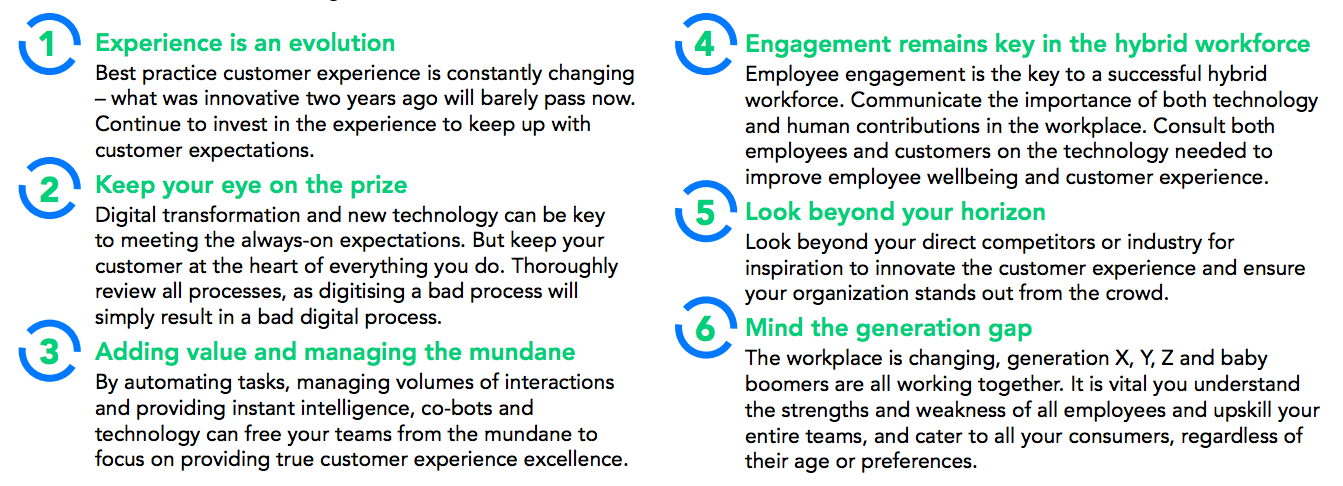Hey brands, your subpar customer service could soon be leading to customer defection. According to new research from VerintSystems, a full two-thirds of consumers said they are more likely to switch to brands that provide the best experience or service. This finding underscores the importance of providing exceptional service—and the ultimate cost to those companies that fail.
“The finding that consumers are easily swayed to switch to product and service providers that offer a super customer experience demonstrates the harsh reality of today’s business and loyalty landscape,” said Ryan Hollenbeck, SVP of global marketing and executive sponsor of the Verint Customer Experience Program, in a news release.
The research, done in partnership with Opinium Research, reveals that loyalty and customer retention continues to decline globally, as just 44 percent of consumers say they have been with their service providers for three years or more (down 39 percent since 2015). While this may seem a sobering metric, the study did uncover one potent means to spur brand loyalty—convenience. More than three-quarters (77 percent) of consumers surveyed said that convenience is a major factor when choosing a brand or service provider, while more than two-thirds (68 percent) feel loyal to brands that make it easy and convenient to engage.
“The customer experience gauntlet has been thrown; customers demand exceptional service in exchange for their business or they will take their business elsewhere,” said Hollenbeck. “The question now is, how do brands respond?”
Sixty percent of consumers expect to engage with an organization via any channel at any time
These increasing customer expectations are forcing organizations to adopt an ‘always-on’ approach to service. To succeed in meeting this ‘always-on’ service imperative, organizations continue to turn to automated solutions such as chat-bots and artificial intelligence—the hybrid workforce—leveraging a combination of man and machine to drive customer engagement and operational efficiencies.
Even as consumers continue to adopt these digital service channels, the human factor still is perceived to be a vital element in the customer engagement equation. While the first preference for consumers is to manage inquiries online in a self-serve fashion (34 percent), speaking to someone over the phone (30 percent) or in person (29 percent) are also preferred by a significant portion of those surveyed. Mobile apps continue to rise in popularity as an engagement tool, increasing 57 percent from a similar Verint study from 2018. The research also finds that human engagement is particularly valuable for critical interactions that can serve to build long-term relationships. For example, when a customer has an urgent question or complaint, their first preference is to speak with a live human agent via the phone or in person.
“The study finds the greatest challenge and opportunity for businesses is to be strategic in their hybrid workforce approach,” said Hollenbeck.” Organizations need to turn to automated solutions to cope with increased volume and demands, but they must ensure they continue to provide the high-quality experience customers expect—including the ability to engage with a human when needed. Their customer engagement strategy needs to empower customers with the ability to switch seamlessly between digital and other channels.”
Six considerations for customer and employee engagement in the always-on era:
Dr. Paul Redmond, global expert in generational theory and employability says brands must also consider their workforces as they chart their customer engagement strategies. “In an age where customers and the workforce span multiple generations, organizations face a challenge to deliver an exceptional experience for all. Engagement and empowerment are key. The human workforce must work hand-in-hand with technology, automating straightforward enquiries to free humans up for more impactful and fulfilling engagement. This will only be successful if organizations truly engage their employees and understand the different requirements of a multi-generational workforce.”
Download the full report here.
This research was commissioned by Verint from February 1-11, in association with research company Opinium Research LLP. Interviews were conducted amongst 34,068 consumers in the following countries: Australia, Brazil, Canada, France, Germany, Hong Kong, India, Japan, Mexico, Netherlands, Singapore, Saudi Arabia, South Africa, Spain, Sweden, the United Arab Emirates, United Kingdom and the United States. The research was conducted online in the local language for each country, and respondents were incentivized to participate. Sectors involved in the survey included banking, brick-and-mortar retailers, credit card, insurance, mobile phone provider, online retailers, telecommunications, travel and utilities.








